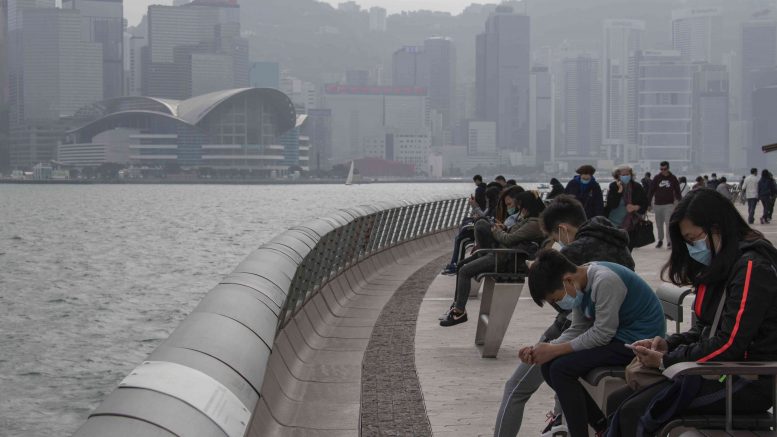When I landed at Toronto’s Pearson International Airport on March 20 aboard an Air Canada ‘repatriation’ flight from Mexico, none of us were checked to see if we had a temperature – a symptom of COVID-19. Instead, we were handed sheets of paper with instructions about self-quarantining for fourteen days and recognizing symptoms. The airport dispensed with the immigration kiosks for my flight — but my parents flying in on March 22 had to punch in their passport details on a keyboard touched by the hands of hundreds of others.
Had I landed in South Korea – which has distinguished itself by rapidly implementing testing and containment measures and showing the world the right way to deal with a pandemic – I would have had a thermometer trained on my forehead to see if I had a fever. Had I developed symptoms later, I could have jumped in my car and driven to a drive-through testing facility and received results within 12 hours.
“South Korea started its response early, which was extremely important for slowing the spread [of the virus],” Sanghyuk Shin, an assistant professor at the University of California at Irvine and director of its Infectious Disease Science Initiative, told The Nation magazine in the U.S. “In stark contrast, the slow pace of rolling out testing in the U.S. has significantly hampered our ability to slow the spread of the virus, and now we clearly have widespread community transmission in the U.S.”
Countries in the West have known about the virus since January and had a chance to try to get out ahead of it — but have been shockingly slow to prepare — leaving front-line health-care workers ill-equipped and at serious risk. Even many of the most basic containment and contact tracing measures in place in Asia either have not been implemented here or have been put in place late — not to mention the difficulties people still face if they want to be tested. Supply chains weren’t ramped up and protective equipment, masks, and ventilators are in short supply.
Anthony Costello, a professor of global health and sustainable development at University College London, estimated on March 20 that testing in countries like South Korea and China has been “ramped up to over 20,000 per day,” while in the U.K. it is closer to 4,000 tests a day. China listened to the World Health Organization, Costello wrote on March 15 in The Guardian. “They tested extensively, setting up mobile testing centres, and getting the test result time down from four days to four hours. They cut the time from onset of symptoms to lab result from 12 to three days. They identified family clusters … and arranged isolation centres for contacts.”
Daily briefings by public health experts to the public have also helped governments in China and South Korea stay on top of the crisis. Costello noted that provinces in China have set up 24-hour TV channels to inform the public. The Korea Centers for Disease Control and Prevention and other agencies “have provided, on a daily basis and via texts, detailed information about COVID-19 patients, including where they have been and where they may have contracted the virus,” The Nation reported. It’s the same in Hong Kong, where the government describes new cases in its daily newscasts including where in the city they reside, in order to know the ‘roadmap’ of infection.
“They did what most Asian countries have done and North America and Europe didn’t, which was intense tracking: Setting up huge teams to trace each confirmed case, their recent movements and contacts, and then follow up on those,” my brother, a Hong Kong resident, tells me. “It takes manpower and focussed perseverance, but all the experts here are saying it’s the game-changer. In other words, don’t simply warn everyone to be careful. Use public funds to make sure they are, and connect all the cases like dots or a family tree.”
More recently Hong Kong has begun separating incoming passengers at the airport who have a temperature or other signs of illness and fitting them with an electronic bracelet linked to a downloaded app that tracks their movements, and the government is considering fines for those who break quarantine. “The bracelets here aren’t just to punish people sneaking out of quarantine,” he writes in an email. “They are primarily for government to track movement patterns. If someone goes out, they can trace where they’ve been to inform shops, restaurants, etc. that they might have been exposed.” It’s a question of where to put public resources, he adds, noting that the U.S., to cite one example, “has enormous under-used military and reserve forces that could take on the tracing task.”
With the right testing, contact tracing and quarantine, new cases in South Korea and China have levelled off for now. “To model with confidence an epidemic like COVID-19, we must know how many people are already infected with the virus and where the clusters are,” Costello wrote on March 20 in The New Statesman, a British political and cultural magazine. “The WHO recommendation for epidemic control, based on decades of experience, was simple. Test, test, and test again in communities to find cases,” he said. “Isolate them and all their contacts … It’s not rocket science requiring complex mathematical models. Just old-fashioned epidemiological detective work by public health teams.”


Be the first to comment on "Editorial: Asia shows the way"